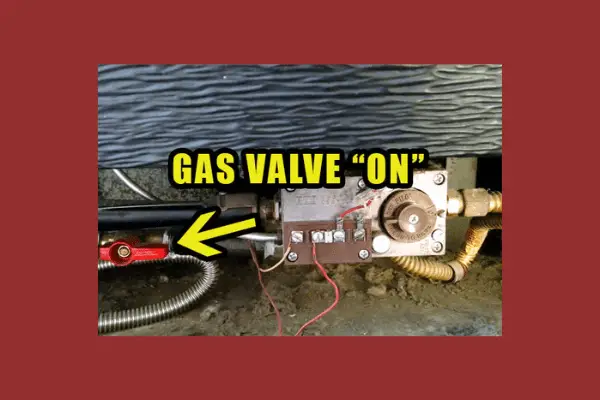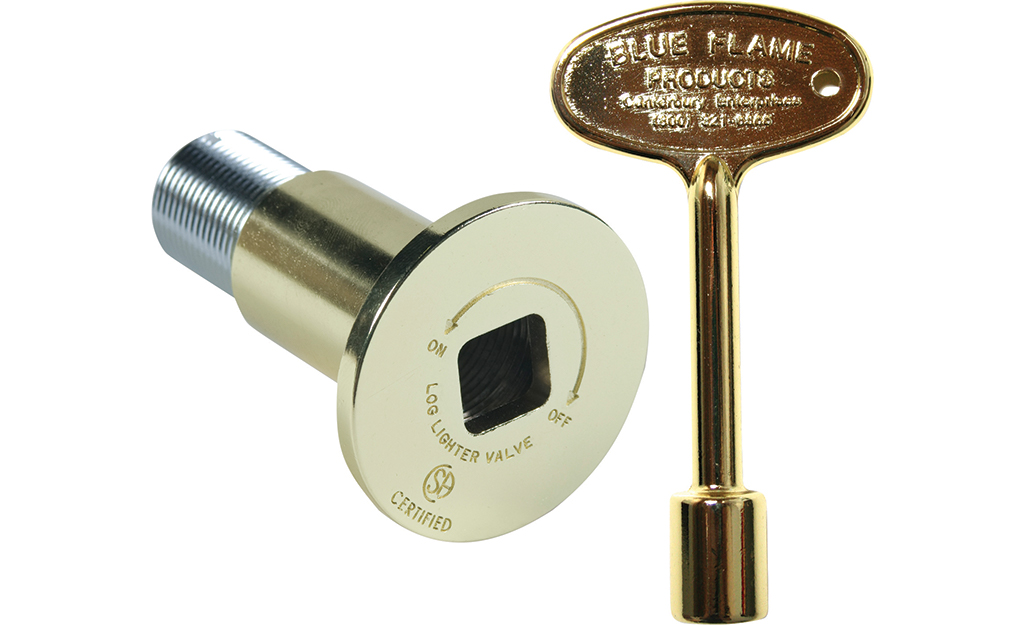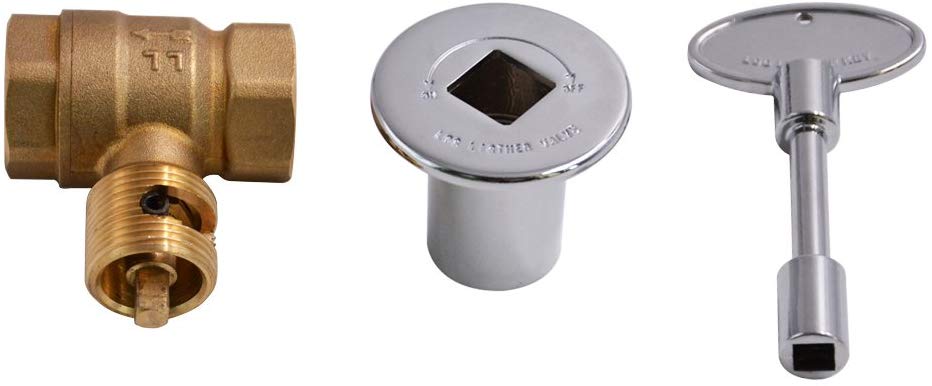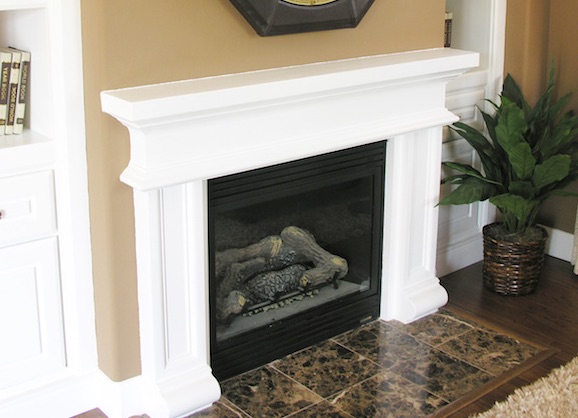Gas Valve Shut Off For Fireplace

Fireplaces offer warmth and ambiance, but understanding how to safely operate and maintain them is crucial. A key component of any gas fireplace is the gas valve, which controls the flow of natural gas or propane to the burner. Knowing how to shut off this valve is essential for safety and maintenance. This guide provides a comprehensive yet accessible explanation of gas valve shut-off procedures for fireplaces.
Why You Need to Know How to Shut Off the Gas Valve
There are several reasons why you might need to shut off the gas supply to your fireplace:
- Emergency Situations: If you smell gas, suspect a leak, or notice any unusual behavior with your fireplace, shutting off the gas is the first step in ensuring safety.
- Maintenance and Repairs: Before performing any maintenance or repairs on your fireplace, it's vital to isolate the gas supply to prevent accidental leaks or ignition.
- Extended Absence: If you're going to be away from your home for an extended period, it's a good practice to shut off the gas supply to your fireplace.
Understanding Your Fireplace's Gas Valve
The gas valve is a critical safety device that controls the flow of gas to the fireplace burner. It's typically a manually operated valve, although some newer models may have electronic valves that can be controlled remotely or through a thermostat.
Types of Gas Valves
While designs may vary slightly, most gas fireplace valves fall into one of these categories:
- Manual Shut-Off Valve: This is the most common type. It usually has a handle or lever that you turn to the "off" position.
- Combination Gas Valve: This valve combines the shut-off function with other controls, such as pilot light adjustment and flame height control.
- Electronic Gas Valve: Found in newer models, these valves are controlled electronically and may have remote control or thermostat integration. Even with an electronic valve, there is usually a manual shut-off option as a safety backup.
Location of the Gas Valve
The location of the gas valve can vary depending on the fireplace model and installation. However, it's usually found in one of these places:
- Behind the Fireplace Access Panel: Many gas fireplaces have an access panel, often located at the bottom of the unit, that conceals the gas valve and other components.
- Adjacent to the Fireplace: In some installations, the gas valve is located directly next to the fireplace, either on the floor or mounted on the wall. Look for a short pipe coming from the wall that leads directly to the fireplace.
- Under the Fireplace: For raised fireplaces, the valve may be located underneath the firebox.
Important: Take the time to locate your gas valve *before* you need to use it in an emergency. Familiarize yourself with its appearance and how it operates. Use a flashlight if necessary to get a clear view.
Step-by-Step Guide to Shutting Off the Gas Valve
Here's a detailed guide on how to safely shut off the gas valve to your fireplace:
- Locate the Gas Valve: As mentioned earlier, take your time to find the gas valve. Consult your fireplace owner's manual if needed.
- Identify the Valve Type: Determine whether you have a manual shut-off valve, a combination valve, or an electronic valve with a manual override.
- For Manual Shut-Off Valves:
- Look for a handle or lever on the valve. It will typically be oriented either parallel or perpendicular to the gas pipe.
- If the handle is parallel to the pipe, the valve is open.
- To shut off the gas, turn the handle 90 degrees so that it is perpendicular to the pipe.
- The handle should now be clearly in the "off" position. Some valves may have markings indicating "on" and "off."
- For Combination Gas Valves:
- Combination valves often have a knob or dial with multiple settings.
- Look for a clear "off" marking on the valve.
- Turn the knob or dial to the "off" position. You may need to press down on the knob while turning it, depending on the model.
- For Electronic Gas Valves:
- Even with an electronic valve, there is usually a manual shut-off. This might be a separate valve located near the electronic control unit, or it might be integrated into the electronic valve itself.
- Consult your fireplace owner's manual for specific instructions on how to manually shut off the gas supply.
- Verify the Valve is Closed: After shutting off the gas valve, double-check to ensure that it is fully closed. If you are unsure, turn the handle slightly back and forth to confirm that it is in the "off" position.
- If You Smell Gas: If you smell gas *before*, *during*, or *after* shutting off the valve, immediately evacuate the premises. Do not use any electrical devices, including lights or telephones, as this could ignite the gas. From a safe location, call your gas company or the fire department.
Important Safety Precautions
Safety is paramount when dealing with natural gas or propane. Here are some essential safety precautions to keep in mind:
- Never Smoke or Use Open Flames: Do not smoke or use any open flames near the gas valve or fireplace, especially if you suspect a gas leak.
- Do Not Use Electrical Devices: As mentioned above, avoid using electrical devices if you smell gas.
- Consult a Professional: If you are unsure about any aspect of shutting off the gas valve or maintaining your fireplace, consult a qualified HVAC technician or gas fireplace specialist.
- Carbon Monoxide Detectors: Ensure that you have working carbon monoxide detectors installed in your home. Carbon monoxide is a colorless, odorless gas that can be deadly.
- Regular Maintenance: Schedule regular maintenance for your fireplace to ensure that it is operating safely and efficiently.
Relighting the Pilot Light (After Shut-Off)
After shutting off the gas, you will likely need to relight the pilot light. Always consult your fireplace owner's manual for specific instructions, as the procedure can vary depending on the model.
Here are some general steps for relighting a pilot light:
- Turn off the Gas Valve: Ensure the main gas valve is still in the "off" position.
- Wait: Wait for at least five minutes to allow any residual gas to dissipate.
- Locate the Pilot Light Assembly: The pilot light assembly is usually located near the burner.
- Follow the Instructions on the Valve: Most gas valves have instructions printed directly on them for relighting the pilot light. These instructions usually involve turning the knob to the "pilot" position, pressing down on the knob to release gas to the pilot, and using a match or lighter to ignite the pilot.
- Hold the Knob Down: Continue holding the knob down for about 20-30 seconds after the pilot light ignites. This allows the thermocouple (a safety device) to heat up and keep the gas valve open.
- Release the Knob: After 20-30 seconds, release the knob. The pilot light should remain lit. If it goes out, repeat the process.
- Turn the Valve to the "On" Position: Once the pilot light is lit and stays lit, turn the gas valve to the "on" position.
- Monitor the Fireplace: Monitor the fireplace for a few minutes to ensure that it is operating properly.
Important: If you have difficulty relighting the pilot light, or if you smell gas at any time, turn off the gas valve immediately and consult a qualified technician.
Troubleshooting Common Issues
Here are some common issues you might encounter when dealing with your fireplace's gas valve, and some troubleshooting tips:
- Gas Valve Won't Turn: If the gas valve is difficult to turn, it may be corroded or stuck. Try applying a small amount of penetrating oil to the valve stem and gently working it back and forth. If it still won't turn, consult a professional.
- Gas Smell After Shut-Off: If you smell gas after shutting off the valve, it could indicate a leak in the gas line or the valve itself. Evacuate the premises and call your gas company or the fire department.
- Pilot Light Won't Stay Lit: If the pilot light won't stay lit after you release the knob, it could be a problem with the thermocouple. The thermocouple may need to be cleaned or replaced.
Conclusion
Knowing how to shut off the gas valve to your fireplace is a fundamental safety skill for any homeowner. By understanding the different types of valves, their locations, and the proper shut-off procedures, you can protect yourself and your family from potential hazards. Always prioritize safety and consult a qualified professional if you have any doubts or concerns. Regular maintenance and inspections are key to ensuring the safe and efficient operation of your gas fireplace.










